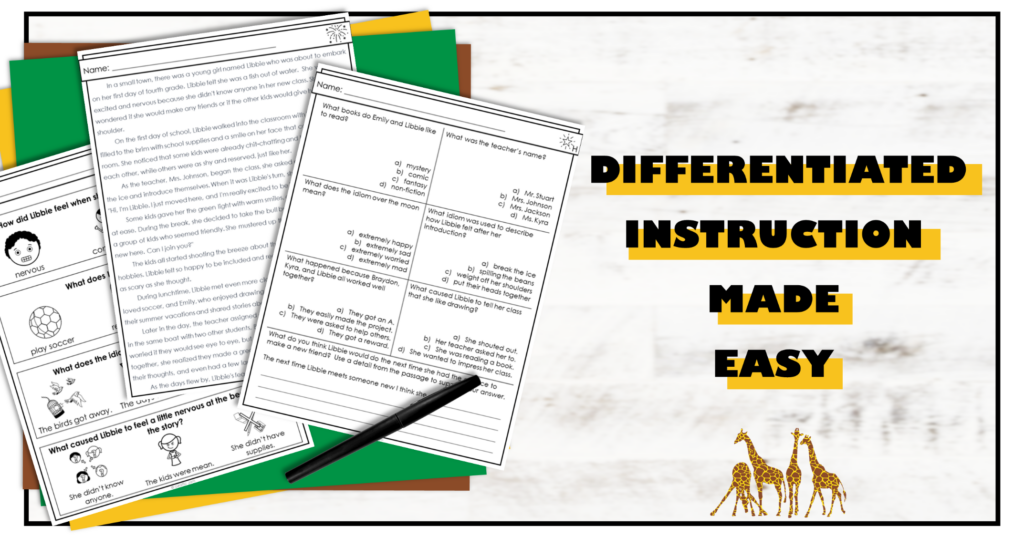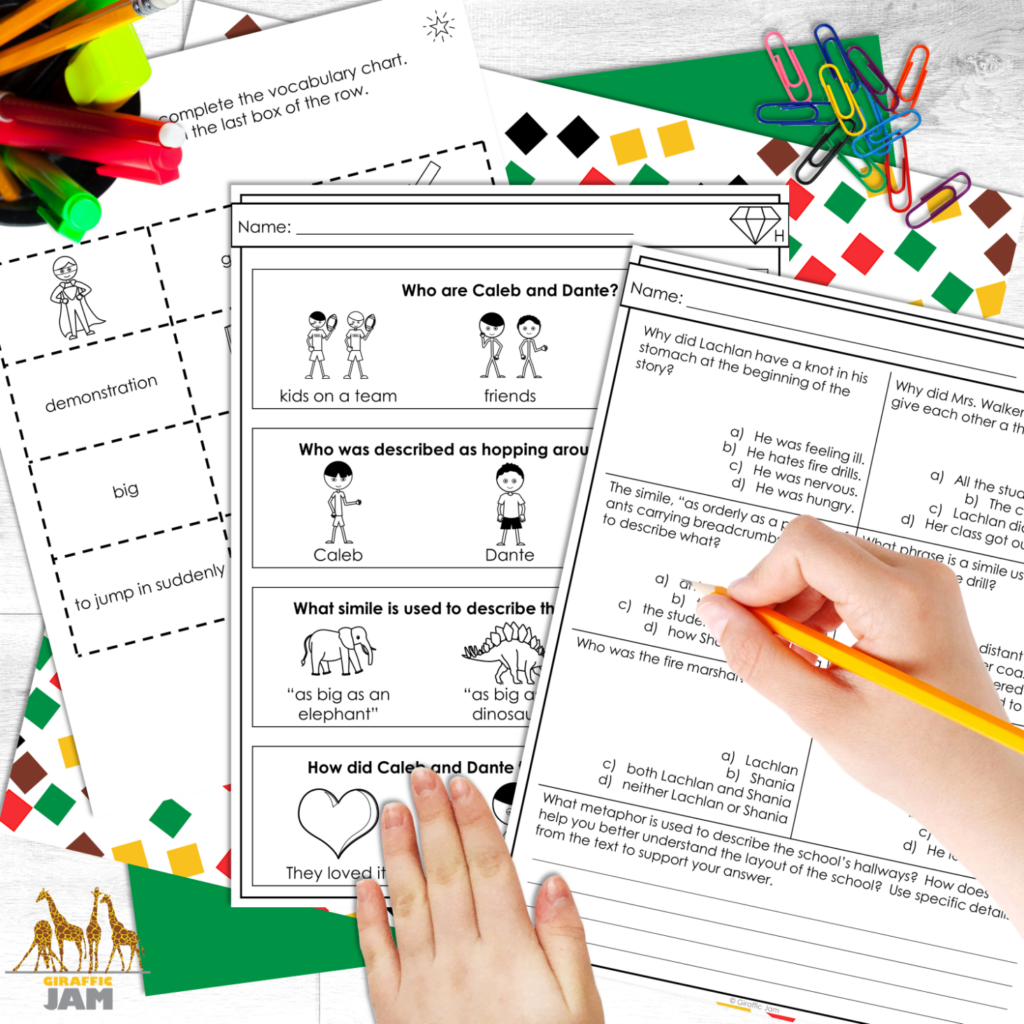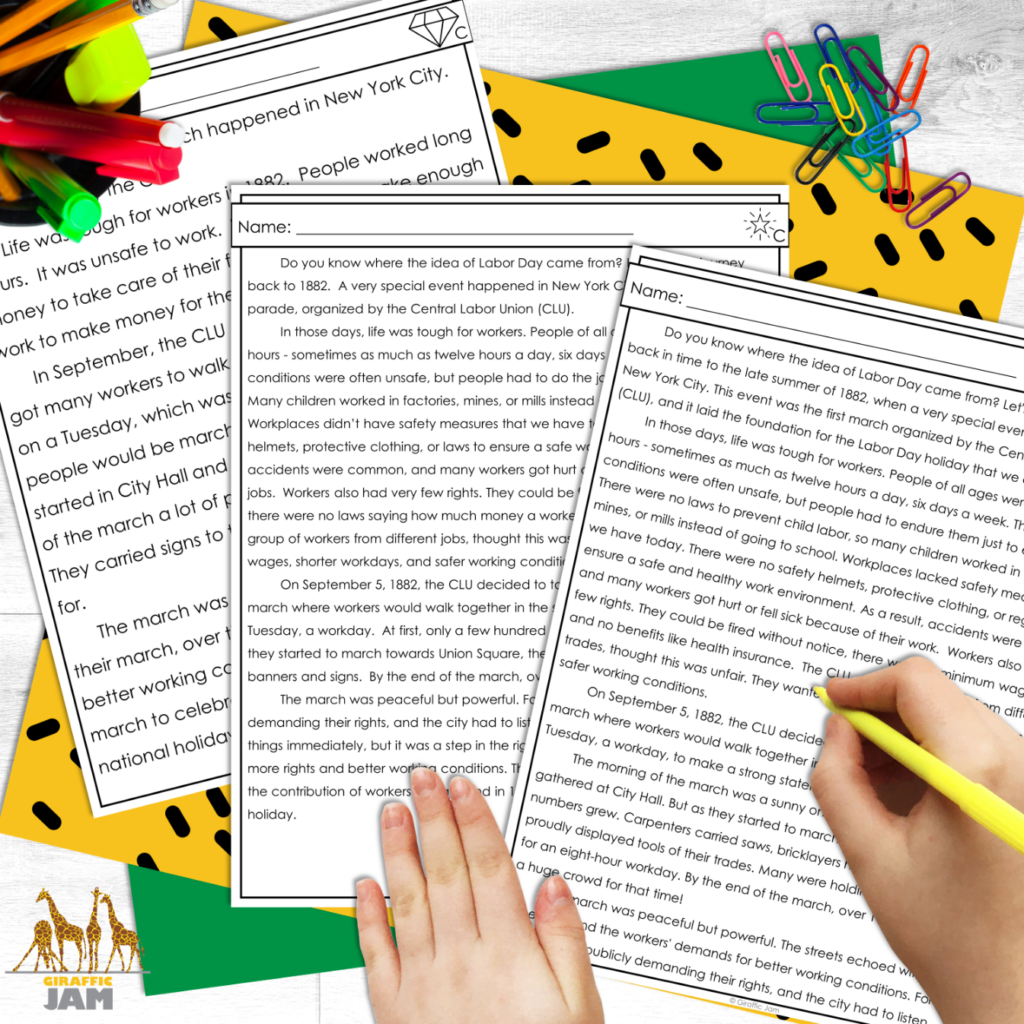
Differentiated instruction is essential in today’s diverse classrooms. Without it, some students might struggle or lose interest, while others might find the material too easy and become bored. By differentiating, we can tailor our teaching to meet each student’s unique needs, making learning more effective and enjoyable for everyone.
Differentiated instruction is a teaching approach that involves providing different students with different ways to learn the same material. The purpose is to address the diverse learning needs, styles, and abilities of students. By differentiating instruction, teachers can ensure that all students, regardless of their starting point, can achieve success and show growth in their learning.

Looking to implement differentiated reading activities in your classroom? Check out the Year-Round Differentiated Reading Comprehension Bundle for ready-made resources that cater to diverse reading levels.
Example: You might start by conducting a simple reading assessment to gauge where each student stands. Based on this data, you can set individualized goals and choose suitable reading activities.
Understanding the Three Types of Differentiation:
Examples:
Flexible groupings allow you to group students by skill level, interest, or learning style for specific activities. This flexibility makes it easier to address individual needs.
Tips:
The September Differentiated Reading Comprehension Bundle provides a collection of pre-made, differentiated reading materials. This bundle includes texts at various reading levels, along with comprehension questions and activities tailored to each level.
Benefits:

Practical Tips for Classroom Management:
Managing a classroom with differentiated instruction can be challenging but rewarding. Here are some tips:
Reflection is crucial to improving differentiated instruction. Regularly evaluate the effectiveness of your strategies and be open to making adjustments based on student feedback and assessment results.
Differentiated instruction can revolutionize your classroom, making reading more accessible and engaging for all students. The Year-Round Differentiated Reading Comprehension Bundle provides everything you need to implement effective differentiation in reading, offering a comprehensive set of materials that cater to diverse learning needs. Give it a try and watch your students thrive!